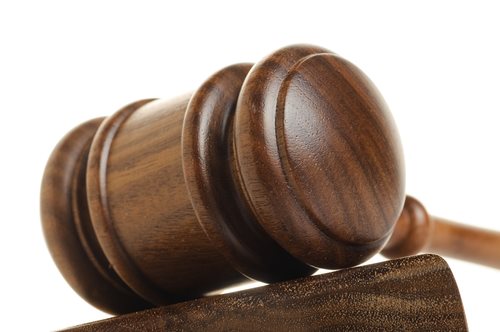
What is the Court System in the United States?
The court system in the United States, in part, was inherited from
English common law. The basic principle of the court system in the United
States is that there are two sides present in a trial or legal battle.
The
plaintiff and defendant or parties that represent the opposing sides in the
United States Court System will present their arguments before an impartial
judge, and in criminal trials, a jury. In a criminal setting, the prosecutor
acts as a plaintiff on behalf of the underlying citizen or State who files the
charge.
In the United States’ court system it is the judge’s duty to
determine what the law is in relation to the particular case being reviewed. In
this setting, the jury’s duty in a criminal trial is given the authority and
responsibility to determine what the facts are in the particular case.
The lawyers
in the case are then responsible for representing their respective clients to
the best of their ability. The outcome of these relationships, known as the
process of justice, will yield a resolution to the legal battle.
Establishment of a Dual Court System:
The court system in the United States, at the Federal and State
level, is called the judicial branch of Government. The judicial branches at
both levels are responsible for applying and subsequently interpreting the rule
of law for underlying cases. The United States’ court system, as previously
mentioned, is divided into two administratively separate systems: the Federal
and State court systems.
Both the Federal and State court systems of the United States
maintain independence from the other branches (the executive and legislative)
of Government. This dual court system is a heritage of the colonial period. The
United States Constitution mandated the establishment of a Federal court system
in 1789, when each of the original 13 Colonies already maintained its own
comprehensive court system.
As a result of this structure, the two court
systems grew side by side and came to exercise judicial authority relative to
the particular jurisdiction over which the court presided.
The Federal Court System:
The Federal court system was affirmed through the passing of the
Constitution. According to Article III of the United States Constitution, “The
judicial power of the United States shall be vested in on supreme court and in
such inferior Courts as the Congress may from time to time ordain and
establish.”
At the lower rung of the Federal court system there are Federal
district courts, which possess original jurisdiction that handle the majority
cases of Federal law. Directly above the district courts are the courts of
appeals, each superior to one or more district courts.
The State Court System:
The court system of the states is quite diverse. No two states
have identical judiciary systems. That being said, the states, similar to the Federal
Government, have a hierarchy that organizes the system of general courts along
with groups of specialized courts.
The lowest level of state courts may include
the following court systems: municipal court, traffic courts, county courts,
police courts or magistrate courts. These courts, which are typically
established as tribunals, will only handle minor civil and criminal matters. More
serious offenses are heard in the State Superior Court system.



















